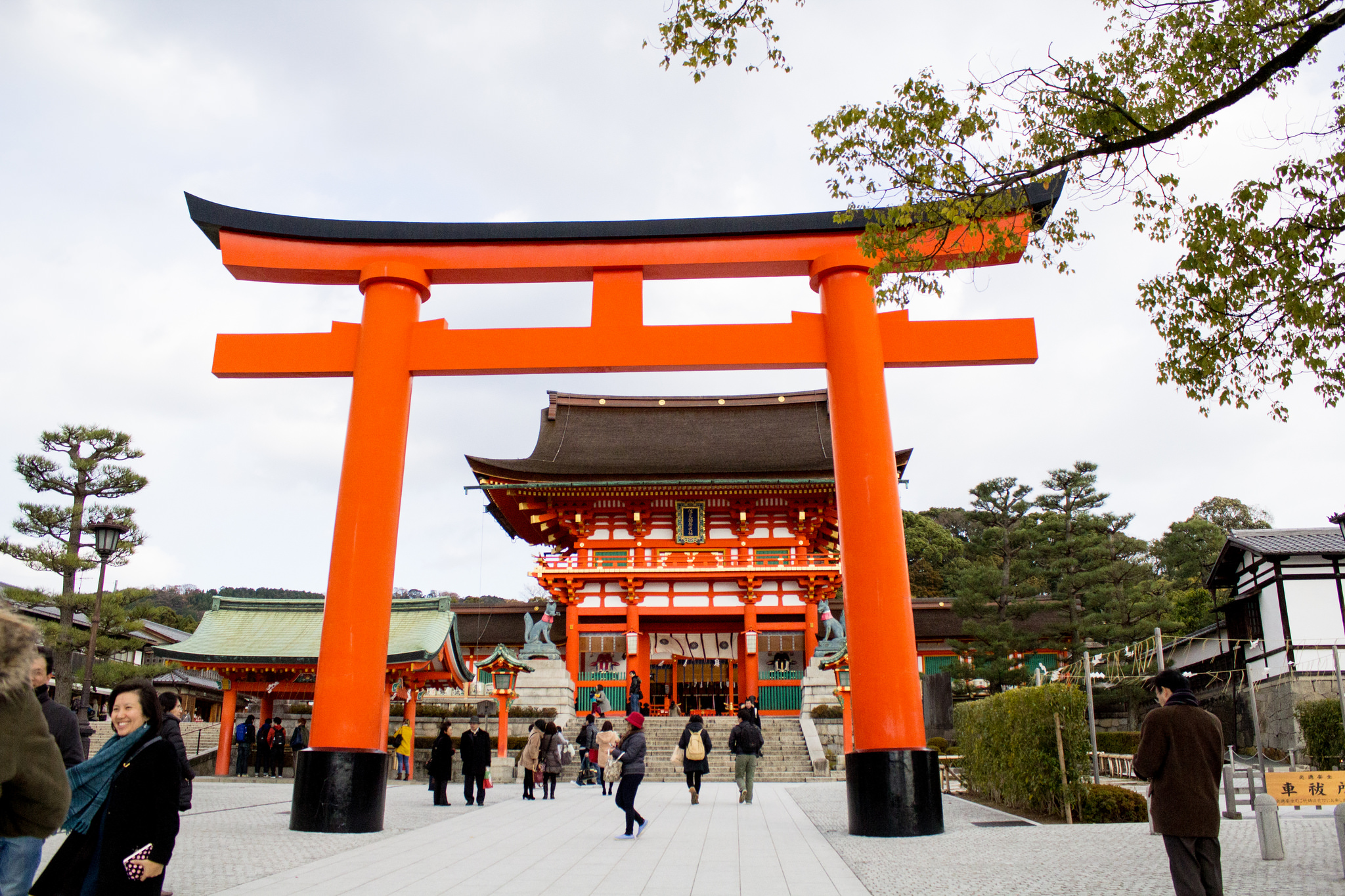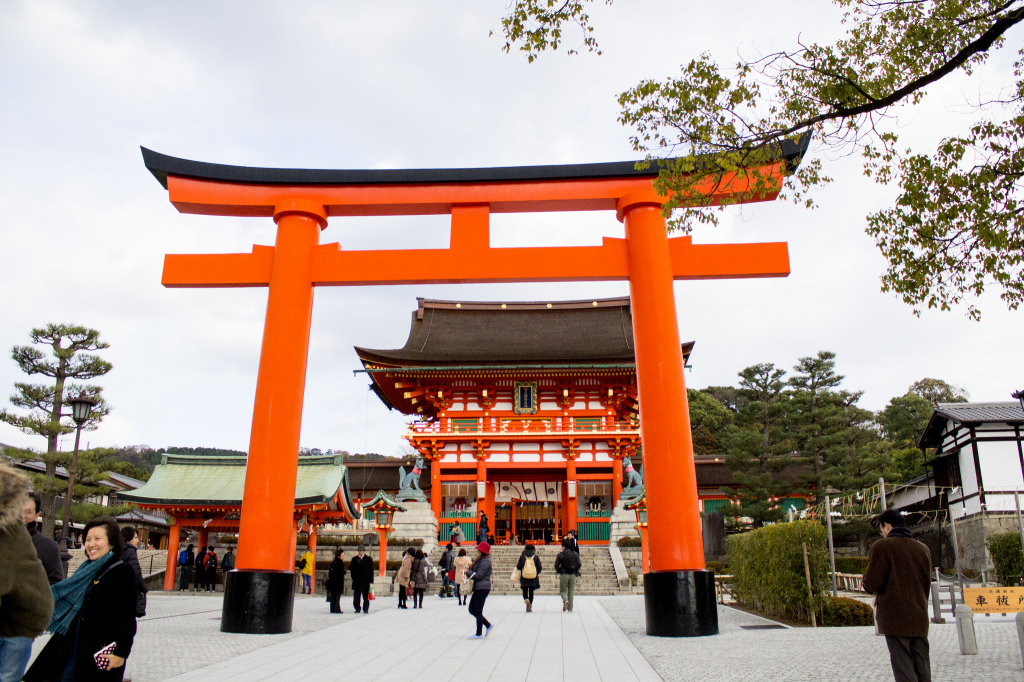The land of the rising sun has always been famous for its many historic Shinto shrines. It is not just the land of cherry blossoms and Hello Kitty. Japan boasts a rich history for hundreds of years and these shrines have served as silent witnesses to the country’s change and growth. I have always been interested in these shrines. It is a definite must to visit at least one of these famous shrines in Japan if not all of them.
There are a few shrines that I have become familiar with during the course of being a Japanophile. I have also learned some of the customs of the Japanese people involving these shrines. There are also the interesting things and structures that you will see in them. All of these have a rich history that many would be curious to discover. You really can’t have an authentic Japanese experience if you have not visited one of these shrines.
Don’t confuse shrines with temples. Temples are Buddhist and shrines are for those who follow the Shinto religion. These are the two major religions in Japan.
So what are Shinto shrines?
They are places of worship. They are also places where the kami (Shinto “gods”) dwell. There are sacred objects of worship connected to and represent the kami that are stored inside the shrine. Regular people cannot see them but only those in high authority within the shrine.
Here is a list of five famous Shinto shrines in Japan if you want to go shrine hopping. It’s a must to visit them if you even happen to go to Japan.
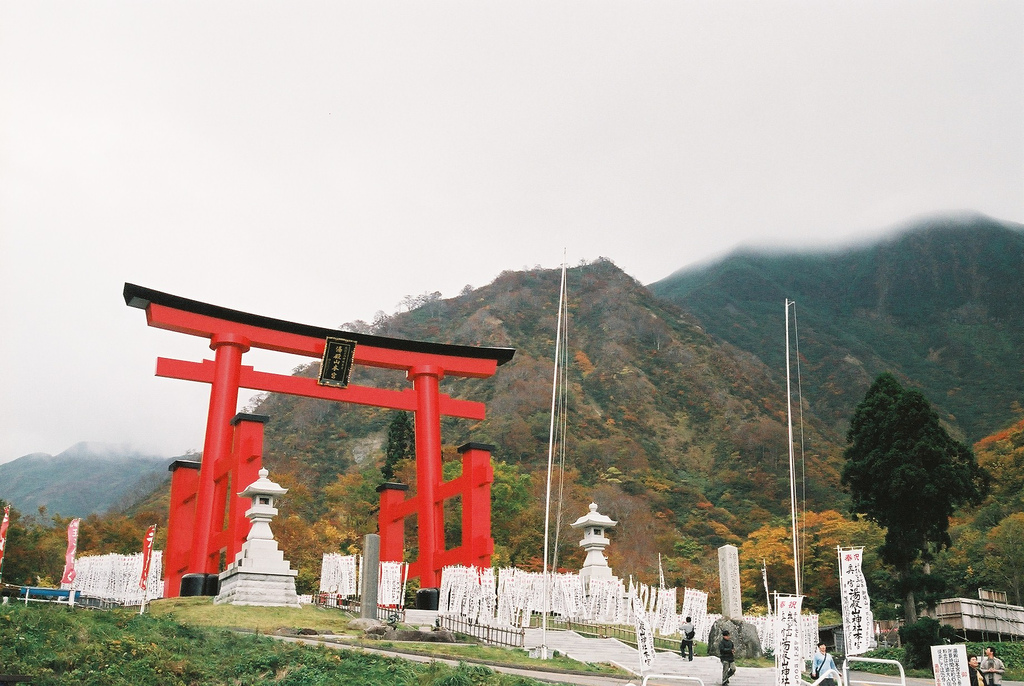
Torii Gate at Yudono-san. Image Source: Flickr
1. Yudono-san
Yudono-san is known as one of the three mountains of Dewa Sanzan (Three Mountains of Dewa) in the Yamagata Prefecture. It is the mountain symbolizing rebirth. It is a considered as a very secretive and mysterious shrine. The shrine located in Yudono-san is considered as an inner sanctum. It is a very sacred site where any talks about the goings on inside the shrine is said to be none existent. You can easily visit this shrine using a toll road. This shrine is located in a valley below the summit of Dewa Sanzan. You can reach the shrine after a few minutes walk from the bus stop. If you want to challenge yourself, you can take the traditional route descending to the shrine from the highest mountain of Dewa Sanzan, Gas-san. Pilgrims normally visit all three shrines in each mountain and Yudono-san is the last stop.
Things to remember while you are in Yudono-san: strictly no photography; the shrine is closed in winter; from the bus stop, you will be walking a stone pathway and, once you reach the end, you will be asked to remove your shoes before entering the shrine to begin the purification rites. It is a very private experience when you visit there.
2. Toshogu Shrine

Get your fortune at Toshogu Shrine. Image Source: Flickr
Toshogu Shrine is located in Nikko in the Kanto Region. It is the final resting place of Tokugawa Ieyasu (founder of the Tokugawa Shogunate). He is enshrined at Toshogu as a diety Tosho Daigongen (Great Diety of the East Shining Light). From a simple mausoleum for Ieyasu, his grandson Iemitsu turned it into a large complex. You will see the five story pagoda in front of the main entrance gate. If you like, you may enter the inside of the pagoda at a separate fee from the fee collected at the main entrance. There are a dozen buildings inside the shrine complex set within a beautiful forest. As it is common for places of worship to contain elements of both Shintoism and Buddhism until the Meiji Period, you will find that Toshogu Shrine has a combination of both. Colorful and elaborate woodcarvings are abundant in Toshogu Shrine.
Something to note: From 2007, some of the buildings within the shrine complex are undergoing renovation. The renovation may last until 2019 and some buildings may be covered in scaffolding. Rest assured though that you will not be disappointed with the rest of the buildings and sights that are inside the shrine.
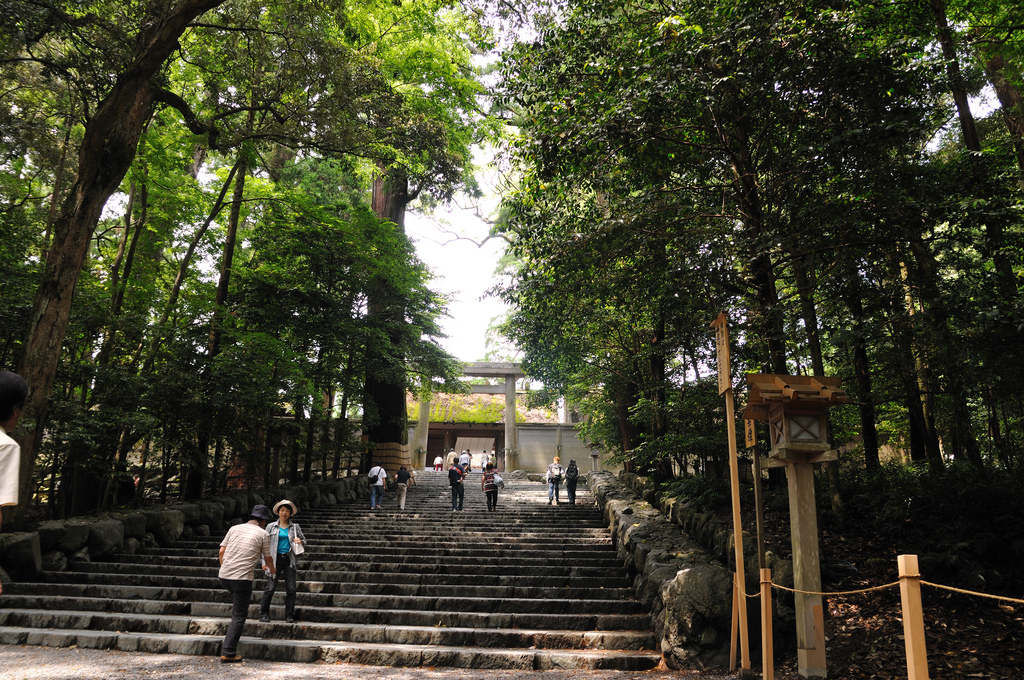
The stairs leading to the Ise Shrines. Image Source: Flickr
3. Ise Shrines
You can find the Ise Shrines (Jingu) in the Shima Peninsula in the Kansai Region. The Ise Jingu consists of two shrines: the Outer Shrine (Geku) and the Inner Shrine (Naiku). Geku is dedicated to Toyouke (Shinto diety of food, clothing and housing) while Naiku enshrines the diety Amaterasu (the Sun Goddess). These shrines are considered Shinto’s most sacred shrines. You can reach the Outer Shrine with a five-minute walk from the Ise-shi Station.
You would need to ride a bus from the station to reach the Inner Shrine since it is several kilometers outside of the city center. These shrines, built in a purely Japanese architectural style, are at the foot of densely wooded hills. The Ise Shrines are one of the oldest shrines in Japan with its simplistic style. Both of these shrines are rebuilt every 20 years according to an ancient Shinto tradition. You will see an empty lot besides every shrine building. These are the sites where the next rebuilding will be. Rest assured though that for the next time you visit there, you will not see anything being reconstructed since last rebuilding was in 2013. You can learn more about the shines’ rebuilding at the Sengukan Museum located at the entrance of Geku. You will find wonderful exhibits inside. There is an English pamphlet and audio guide but expect all signage to be in Japanese.
Picture-taking is not allowed near the main halls. Wooden fences were installed to partially obstruct the view of the innermost building. (You can’t steal a picture even if you want to ninja it.)
4. Fushimi Inari Shrine
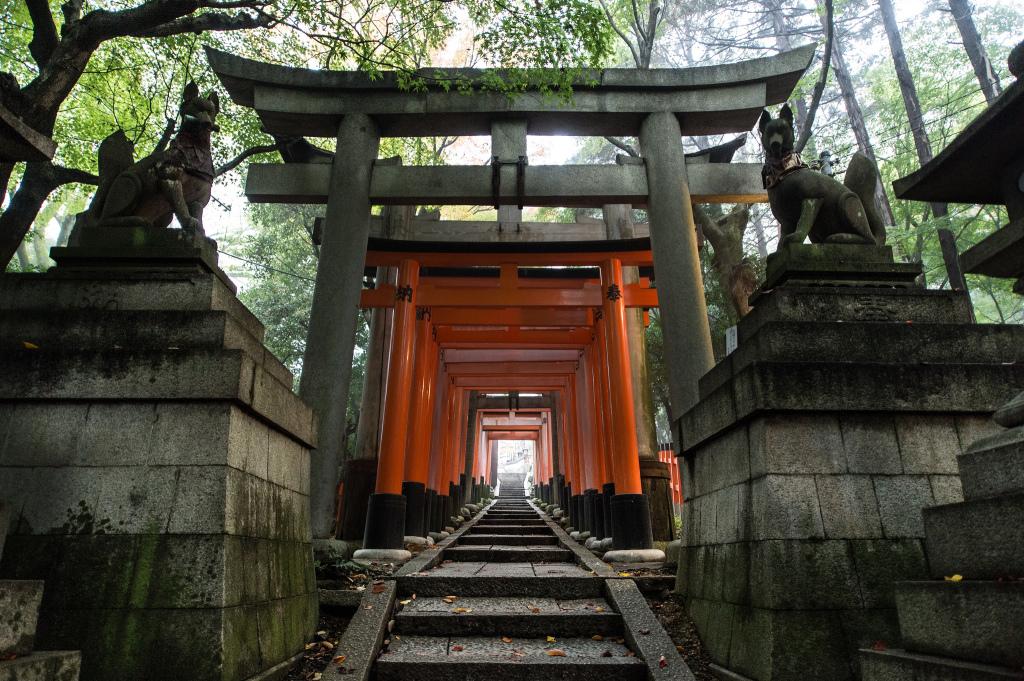
Take a walk under the vermilion torii of Fushimi Inari Shrine. Image Source: Flickr
You will find the Fushimi Inari Shrine in Southern Kyoto in the Kansai Region. It is a very important Shinto shrine in Southern Kyoto. As its name states, the shrine is dedicated to Inari (the Shinto god of rice). Fushimi Inari is the most important out of all the shrines dedicated to Inari. You will find many fox statues in the shrine grounds because they are considered to be Inari’s messengers. (This reminds me of the fox spirits in Ao no Exorcist.) This shrine is also among the most ancient of shrines in Japan.
Many visitors (especially foreigners) go to Fushimi Inari for its mountain trails aside from visiting the shrine itself. You will see the Romon Gate donated by Toyotomi Hideyoshi at the shrine’s entrance. This is the shrine famed for its vermilion Senbon Torii (thousands of tori gates). These torii gates straddle a network of trails behind the shrine’s main buildings. The trail will lead you to a wooded forest of the sacred Mount Inari which belongs to the shrine grounds. You will find names and dates inscribed in each of the torii. That is because each of the torii gates was donated by individuals or companies. It takes about two to three hours if you hike to the summit of Mount Inari. You will see smaller shrines with stacks of miniature torii gates donated by visitors. This is for those who have smaller budgets. You can also leave a torii if you have enough money to donate.
Have a taste of Inari Sushi and Kitsune Udon (Fox Udon) at the restaurants along you hiking trail. Both of these dishes feature aburaage (fried tofu) as this food is said to be a favorite of foxes. (Now this reminds me of Xxxholic’s pipe fox spirit.) You will enjoy great views of Kyoto once you reach the Yotsutsuji intersection half-way up Mount Inari.
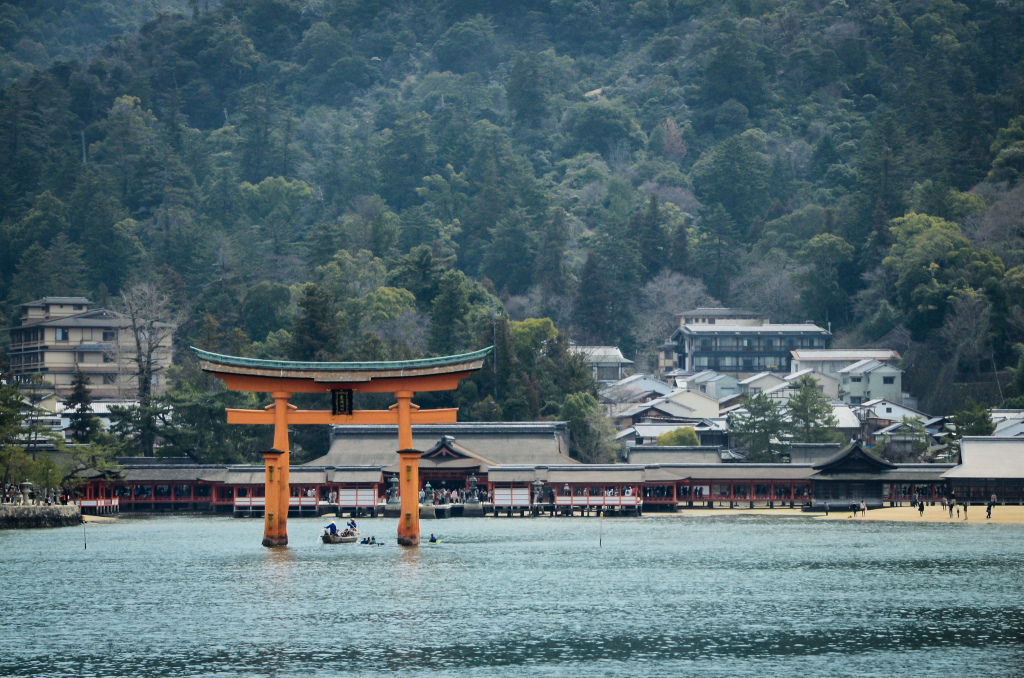
A view of Miyajima. Image Source: Flickr
5. Itsukushima Shrine
This shrine is located in Miyajima Island (Shrine Island) in the Chugoku Region. The island is considered as a holy site of Shinto. It was named so because of Itsukushima Shrine’s fame. Worldwide, the shrine is known as the “floating torii gate”. The shrine and its torii gate are unique because they were built over water. It’s as if they are floating in the sea when viewed during a high tide. You will find a prayer hall, a main hall and a noh theater stage among other buildings inside the shrine complex. The buildings are connected by boardwalks and supported by pillars above the sea. It was Taira no Kiyomori who built the Itsukushima Shrine as the site of his clan’s family shrine.
After sunset, you will see the shrine and torii gate illuminated. You can stay in a ryokan (Japanese inns usually with hot springs) and wear a yukata and geta sandals for a more immersed experience. Evening walks in the island are recommended although you cannot enter the shrine after sunset. You can also take a boat cruise for thirty minutes around the bay and through the torii gate (if it’s high tide). If you want to go on the cruise, be sure to reserve it through your ryokan. You can also do it through the tourist information desk. If you go there during high tide, you will see the shrine and torii gate floating in the water. But if you go there during low tide, you can walk to the torii gate and see it closely.
Why do people visit these shrines?

Itsukushima Shrine at night. Image Source: Flickr
As a place of worship, people come in order to pay their respects to the kami. You can also ask for good fortune. As normally shown in anime, manga or television, you can also draw your fortune and see what luck you will have. (This is normally done during New Years celebration though.)
People visit the shrines during special events like New Year, setsubun, shichigosan and other festivals. It is usually crowded every New Year because a lot of people go there to offer prayers and get blessings. Most of the people draw their luck as a form of prediction of how they will fare for the rest of the year. In setsubun, held on Febrary 3 or 4, people throw roasted beans around the shrine as well as their homes. Shichigosan literally means “seven five three” where boys of age three and five and girls of age three and seven hold a ceremony (usually in traditional or formal clothes) for prayers of good health and growth. Shinto weddings are also held at shrines. It is traditional to bring a new born baby to the shrine after a few weeks of their birth for prayers and blessings.
Not just for sightseeing, you will be able to experience the Shinto religion when you take a tour in these shrines.
